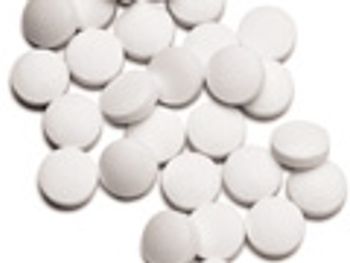
IQ Consortium representatives explore and define common industry approaches and practices for applying GMPs in early development.

IQ Consortium representatives explore and define common industry approaches and practices for applying GMPs in early development.

Will the next US President support the backbone of our industry?

The authors describe how traditional approaches to analytical method and validation may benefit from alignment with quality-by-design concepts.

This article provides a comparison of Rx-360, EXCiPACT and IPEA, available to pharmaceutical manufacturers for the purpose of auditing excipient suppliers and ensuring drug efficacy and patient safety.

Foreign firms struggle against stricter patent laws, but all is not lost.

Real-time experimentation may offer continuous process improvement.

Only the strong survive when it comes to pharmaceutical packaging and shipping.

This study examines the effect and interaction of variations in hypromellose physicochemical properties.

Working together affords many unseen opportunities for pharmaceutical innovation.

The promise of the Generic Drug User Fee Amendments of 2012 is to end multiyear reviews of new generic drugs and the ever-growing queue of pending applications.

FDA launches BeSafeRx program and releases guidance for industry.

EMA has been increasing its interactions with other regulatory agencies across the globe. The agency's most talked about collaboration is with FDA, but EMA has also been intently focused on bolstering its relationship with its counterparts in Japan, India and Russia.

The European Medicines Agency has abolished its Cell-based Product Working Party and Gene Therapy Working Party, with the aim of improving efficiencies and optimizing the use of available expertise.

ISPE has published a new guidance titled ISPE Good Practice Guide: Quality Laboratory Facilities, which defines design guidelines for quality laboratories.

The European Generic Medicines Association (EGA) has raised concerns about the potential fees to be charged by the European Medicines Agency for pharmacovigilance activities

As a result of the passage of the Generic Drug User Fee Amendments Act, Janet Woodcock, director of the Center for Drug Evaluation and Research, announced her plan to reorganize the Office of Generic Drugs (OGD) into a super office that would include subordinate offices. The new super office would report directly to Director Woodcock, with Greg Geba continuing his role as OGD director.

Eli Lilly has received an FDA Warning Letter because of a "misleading" image of a multicolored brain that appeared on the company's website for the diagnostic PET tracer, Amyvid.

USP Hosts Symposium on Science and Standards

Bristol-Myers Squibb has initiated a voluntary recall of 10 lots of BiCNU (carmustine for injection) previously manufactured by Ben Venue Laboratories, a former, third-party contract manufacturer for the company, to the user level.

Generic-drug manufacturers are preparing to pay fees to FDA for the first time in the agency’s history.

The European Medicines Agency has launched a public consultation concerning its inventory of pediatric medicines with the aim of highlighting where further R&D efforts are required. The consultation is the first of its kind in this area.

IQ Consortium representatives explore and define common industry approaches and practices for applying GMPs in early development, with a focus on stability.

PDA's strategic plan calls for maintaining valuable and effective relationships with global regulators.

The European Commission remains vigilant in monitoring potential pay-to-delay deals.

International trade can be great for business, but breaking border laws can put one in hot water.